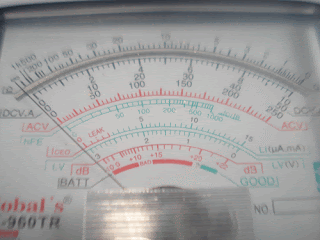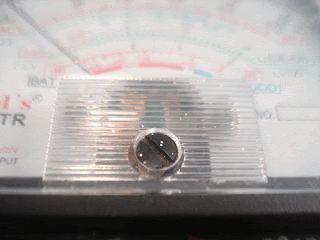If it happens that you are a hobbyist who often use the VOM tool on your projects, you might come to the point asking yourself about how does this magnificent tool work? Students taking up the field of electronics will also be asked by their instructors to conduct a research about how this tool works. Thus, it is the main subject of this article that will offer you a good explanation.
The primary core of the Volt Ohm Meter or VOM is the Electrical Meter, it is a small electromagnetic coil that carries the current that are to be tested. Along with this electromagnetic coil is a permanent magnet placed at the poles. This works by restoring the force or pulling back the two spiral hair-springs at the default level.
When current is applied on the coil, movement will occur and there is a positive sign that there is a presence of electric current flow. There are four characteristics of electrical properties that you can test with your Volt Meter and they are the Voltage, Ohms, Current and Resistance. Among them that you have selected, a flow of current will always pass through the coil to provide you the output.
In reading Voltages, a group of resistors are connected in series to the coil. They vary in values allowing you to make a selection range for voltage to be measured. The same concept is applied on the current except that the resistors are connected in parallel with the coil. Finally is the Resistance or Ohms, there is no supplied source of power unlike the Voltage and Current. This makes the reason that the VOM contains a Dry Cell battery. Exactly just like the Voltage principle, a series of resistors are connected to the coil to output the value of the tested circuit.

After reading this article, you might also come into doubt or curiosity on how does a DMM or Digital Multi-Meter work?

Digital Multi-Meters works exactly the same as the analog VOM but the differences is that most parts are electronically upgraded. The primary core of the analog meter was substituted with a voltmeter. The Meter-Scale has been substituted with graphic display that will show you direct results in the form of numeric numbers. And the same goes with the other parts which makes the DMM output a more accurate measurement.
The primary core of the Volt Ohm Meter or VOM is the Electrical Meter, it is a small electromagnetic coil that carries the current that are to be tested. Along with this electromagnetic coil is a permanent magnet placed at the poles. This works by restoring the force or pulling back the two spiral hair-springs at the default level.
When current is applied on the coil, movement will occur and there is a positive sign that there is a presence of electric current flow. There are four characteristics of electrical properties that you can test with your Volt Meter and they are the Voltage, Ohms, Current and Resistance. Among them that you have selected, a flow of current will always pass through the coil to provide you the output.
In reading Voltages, a group of resistors are connected in series to the coil. They vary in values allowing you to make a selection range for voltage to be measured. The same concept is applied on the current except that the resistors are connected in parallel with the coil. Finally is the Resistance or Ohms, there is no supplied source of power unlike the Voltage and Current. This makes the reason that the VOM contains a Dry Cell battery. Exactly just like the Voltage principle, a series of resistors are connected to the coil to output the value of the tested circuit.

After reading this article, you might also come into doubt or curiosity on how does a DMM or Digital Multi-Meter work?

Digital Multi-Meters works exactly the same as the analog VOM but the differences is that most parts are electronically upgraded. The primary core of the analog meter was substituted with a voltmeter. The Meter-Scale has been substituted with graphic display that will show you direct results in the form of numeric numbers. And the same goes with the other parts which makes the DMM output a more accurate measurement.











